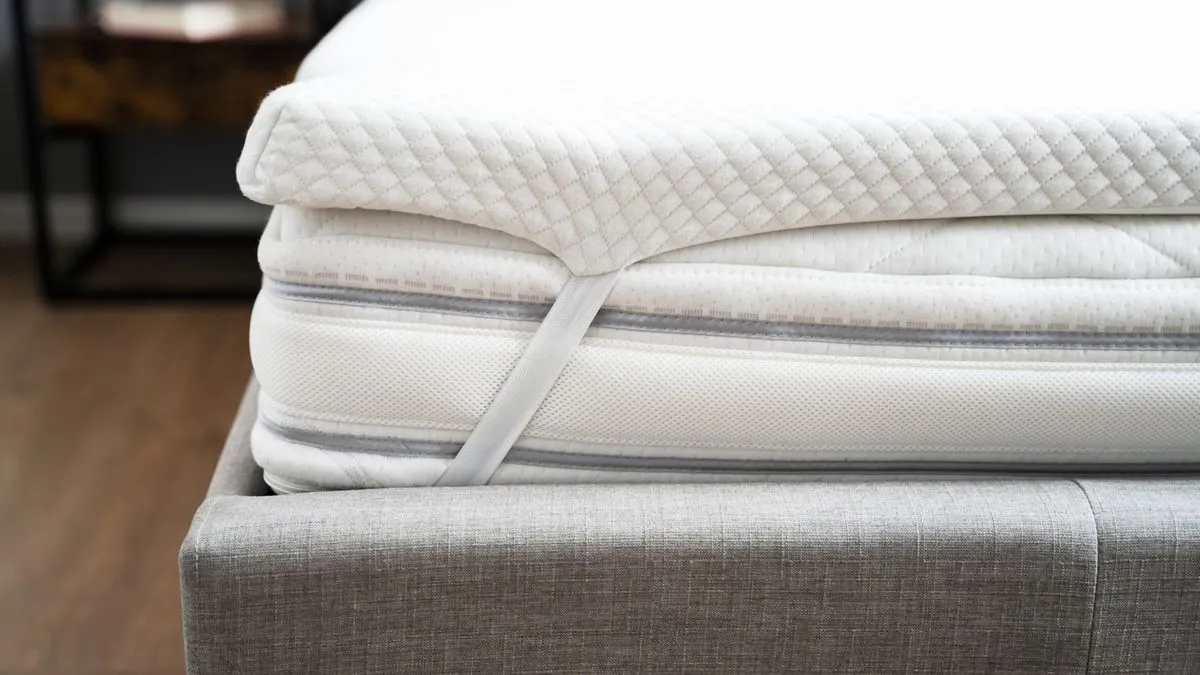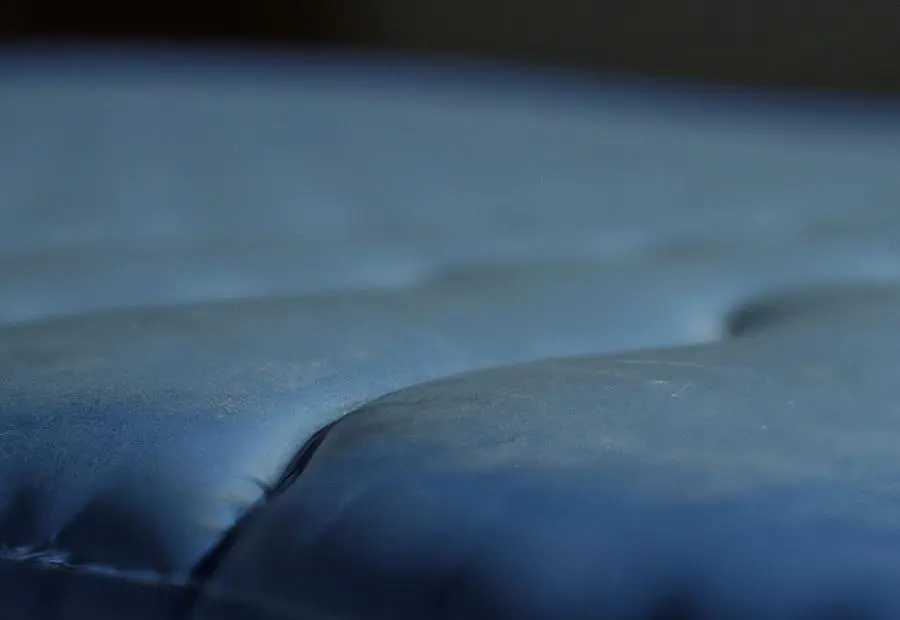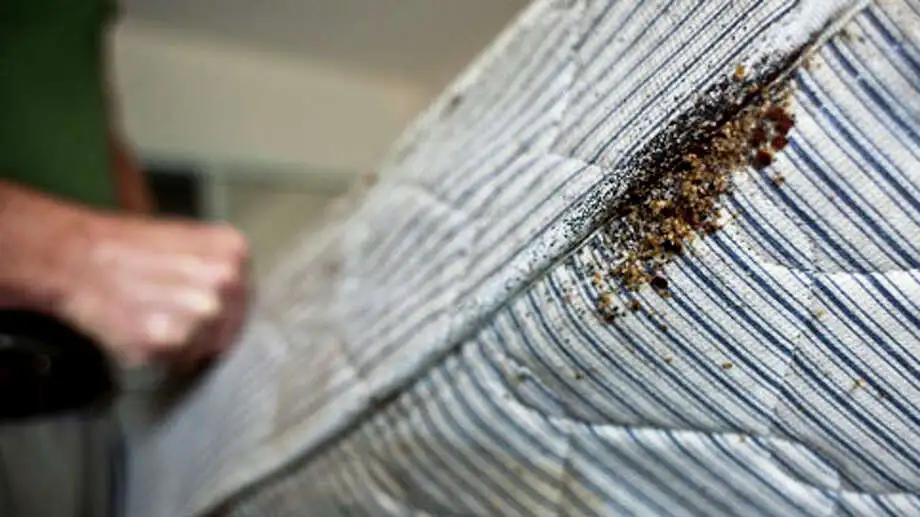Properly disposing of a mattress is important, as millions of mattresses are discarded annually, and understanding the correct disposal methods minimizes environmental impact.
From dismantling to recycling, this article will provide valuable insights into the responsible disposal of mattresses, highlighting the benefits and the various steps involved to contribute to a cleaner, greener future while effectively managing mattress waste.
The Traditional Mattress Disposal Method
Proper mattress disposal is crucial for environmental sustainability. Mattresses often end up in landfills, contributing to pollution and occupying valuable space.
However, mattresses can be recycled and repurposed, offering a potential solution to reduce waste.
Why Proper Mattress Disposal Matters
- Environmental Impact: By dismantling mattresses and separating their components for recycling, materials such as foam, fabric, metal springs, and wood can be reused, minimizing the environmental impact of improper disposal and promoting a more sustainable waste management system.
- Community Health: In addition to environmental concerns, proper mattress disposal also has significant implications for community health. Improperly discarded mattresses can become breeding grounds for pests and bacteria, posing health risks to the community.
- Charitable Opportunities: Moreover, proper mattress disposal presents charitable opportunities. Organizations and programs that accept used mattresses in good condition enable them to be donated to those in need.
Signs That It's Time to Dispose of Your Mattress
Noise
Firstly, if your mattress is producing severe, noticeable noise when you move or change positions, it could be a sign that the internal components, such as coils or springs, are wearing out. This can disrupt your sleep and indicate that the mattress is no longer providing adequate support.
Sagging

Sagging is another common issue that signals the end of a mattress's lifespan. If you notice visible indentations or areas where the mattress sags under the weight of your body, it's a clear indication that the mattress is no longer providing the necessary support for restful sleep. However, there are ways to help prevent sagging.
Lumps

Lumps and uneven surfaces are also red flags that it may be time to dispose of your mattress. These inconsistencies can cause discomfort and disrupt your sleep, indicating that the mattress has lost its original shape and support.
Tears
Tears in the fabric or covering of the mattress can compromise its structural integrity and hygiene. Severe tears can expose the internal materials to dust, dirt, and other contaminants, affecting the overall cleanliness and comfort of the mattress.
Severe Stains
Signs that indicate it's time to dispose of your mattress include severe stains and infestations. Severe stains, such as those caused by bodily fluids, mold, or mildew, can be a breeding ground for bacteria and allergens, impacting the mattress's hygiene and structure.
Infestations

Infestations of bed bugs, dust mites, or other pests can pose health risks and make the mattress unsuitable for use. These issues may compromise your sleep environment and contribute to respiratory problems or skin irritations. Therefore, it's crucial to prioritize mattress hygiene and promptly dispose of a mattress with severe stains or infestations to maintain a healthy sleep environment.
Mattress Disposal Methods
Retailer Take-Back Programs
Retailer take-back programs involve the responsibility of mattress retailers to accept old mattresses from customers when delivering new ones. This process aims to encourage responsible disposal and recycling.
Customers typically need to schedule a pickup or drop-off of their old mattress at the time of purchasing a new one. The benefits of retailer take-back programs include convenience for customers and the assurance that the old mattresses will be disposed of or recycled responsibly.
However, some restrictions may apply, such as the requirement to purchase a new mattress from the retailer to qualify for the take-back service.
Bulk Trash Pickup
Many municipalities offer bulk trash pickup services as part of their waste management programs. Residents can schedule a pickup of large items, including mattresses, for disposal.
This method is often convenient for individuals who are unable to transport their old mattresses to a disposal facility.
However, there may be restrictions on the number of items that can be disposed of during a single pickup, and mattresses may need to be prepared in a specific manner, such as wrapped in plastic, to prevent the spread of pests and debris during transportation.
Drop-Off Facilities
Some communities provide drop-off facilities or designated collection centers where residents can bring their old mattresses for disposal or recycling. Local waste management authorities or environmental agencies frequently oversee these facilities.
Drop-off facilities offer a convenient and environmentally responsible option for individuals to dispose of their mattresses. However, there may be limitations on the types of mattresses accepted, and residents may need to provide proof of residency to access these facilities.
Mattress Disposal Services
Several private companies specialize in mattress disposal and recycling services. These companies often offer pickup services, where they collect old mattresses from residential or commercial locations and ensure proper disposal or recycling.
The benefits of using mattress disposal services include the convenience of having the mattresses picked up from the customer's location and the assurance that the mattresses will be handled responsibly.
However, there may be associated fees for the pickup and disposal service, and customers should verify the company's recycling practices to ensure environmental compliance.
Eco-friendly Disposal Methods
Donation
Donating used mattresses to charitable organizations or shelters is an eco-friendly disposal method that can benefit both the environment and those in need.
The process involves identifying organizations that accept mattress donations, ensuring that the mattress is in good condition, and arranging for drop-off or pick-up.
Benefits of donating mattresses include providing essential bedding for individuals and families in need, extending the mattress's useful life, and reducing waste in landfills.
However, considerations for donation include ensuring that the mattress is clean, free from damage, and meets the donation guidelines of the receiving organization.
Recycling
Recycling mattresses is a crucial eco-friendly disposal method that involves dismantling the mattress and separating its components for recycling. The foam, fabric, metal springs, and wood can be repurposed into various materials, such as carpet padding, new fabrics, metal products, and building materials.
The benefits of mattress recycling include reducing landfill waste, conserving natural resources, and contributing to a sustainable future.
One consideration is to ensure that the recycling facility or program is equipped to handle mattress disposal, as not all recycling centers may accept mattresses due to their size and composition.
Mattress Reuse
Reusing mattresses through refurbishment and reselling is another eco-friendly disposal method. This process involves professionally cleaning and refurbishing the mattress to ensure it meets quality standards before being made available for sale.
The benefits of mattress reuse include extending the product's lifespan, reducing the demand for new mattresses, and minimizing waste generation.
However, considerations for mattress reuse include adhering to regulations and standards for refurbished mattresses, as well as ensuring proper sanitation and quality control measures are in place to guarantee the safety and comfort of the reused mattresses.
Preparing Your Mattress for Disposal
1) Check local regulations
Before disposing of your mattress, it is crucial to check the local regulations regarding acceptable disposal methods in your area. Different regions may have specific guidelines or restrictions that you need to adhere to, ensuring that you dispose of your mattress legally and responsibly.
Some areas may have restrictions on where and how mattresses can be disposed of, and failure to comply with these regulations may result in penalties or fines. By familiarizing yourself with the local regulations, you can ensure that you dispose of your mattress in a manner that is both legal and environmentally responsible.
2) Remove bedding
Begin the disposal process by removing all bedding from your mattress. This includes sheets, pillowcases, mattress protectors, and any other accessories. Make sure to thoroughly clean the mattress surface and remove any stains or debris before proceeding to the next step.
By removing the bedding and cleaning the mattress, you can ensure that it is in a suitable condition for disposal. Cleaning the mattress also helps to prevent the spread of pests and ensures that it can be handled safely during the disposal process.
3) Place in a plastic enclosure
In some areas, it is required to encase the mattress in a plastic cover before disposal. This is primarily done to prevent the spread of bed bugs or other pests. Ensure that the plastic encasement completely covers the mattress and is securely sealed.
This step is crucial to protecting others from potential infestations during the transportation and disposal process. By encasing the mattress in plastic, you can minimize the risk of spreading pests and contribute to a responsible and hygienic disposal process.
4) Apply a suitable disposal method
When disposing of your mattress, it is highly encouraged to choose eco-friendly options. If the mattress is in good condition and usable by another person, think about recycling or donating it.
Many recycling centers accept mattresses and can properly dismantle and recycle their components. If recycling or donation is not available in your area, explore other environmentally responsible disposal methods that minimize the impact on the environment.
By choosing eco-friendly disposal methods, you can contribute to waste reduction and environmental sustainability while ensuring that your mattress is disposed of responsibly.
FAQs
Can You Throw Away Air Mattresses and Waterbeds?
Air mattresses and waterbeds can typically be thrown away, but it's best to check with local waste management authorities for specific disposal guidelines due to their unique construction and materials.
When's the best time to get rid of my old mattress?
The best time to get rid of your old mattress is when it no longer provides proper support or comfort, shows visible signs of wear and tear, or has surpassed its expected lifespan.
How often should you replace your mattress?
Mattresses should be replaced approximately every 7–10 years, although this can vary depending on factors such as mattress type, usage, and individual comfort preferences. So it is advised to start considering a new mattress after 7 years of usage.
Conclusion
By embracing mattress recycling, we can minimize the burden on landfills, conserve natural resources, and contribute to a cleaner planet.
Mattress recycling is a small yet impactful step towards a greener future, ensuring that discarded mattresses are repurposed and contributing to a more sustainable and environmentally friendly waste management system.
Jessica H.
Jessica is a reviewer, writer, and sleep enthusiast at Sleepiverse. Jessica graduated with her master's degree in Nursing research and education. She is a registered nurse and currently works in the Intensive Care Unit. Since becoming a nurse, Jessica has worked the night shift, which means a disrupted sleep schedule. Knowing she needed to function at her best while caring for patients at night, she spent a lot of time researching how to sleep well with a difficult schedule.


